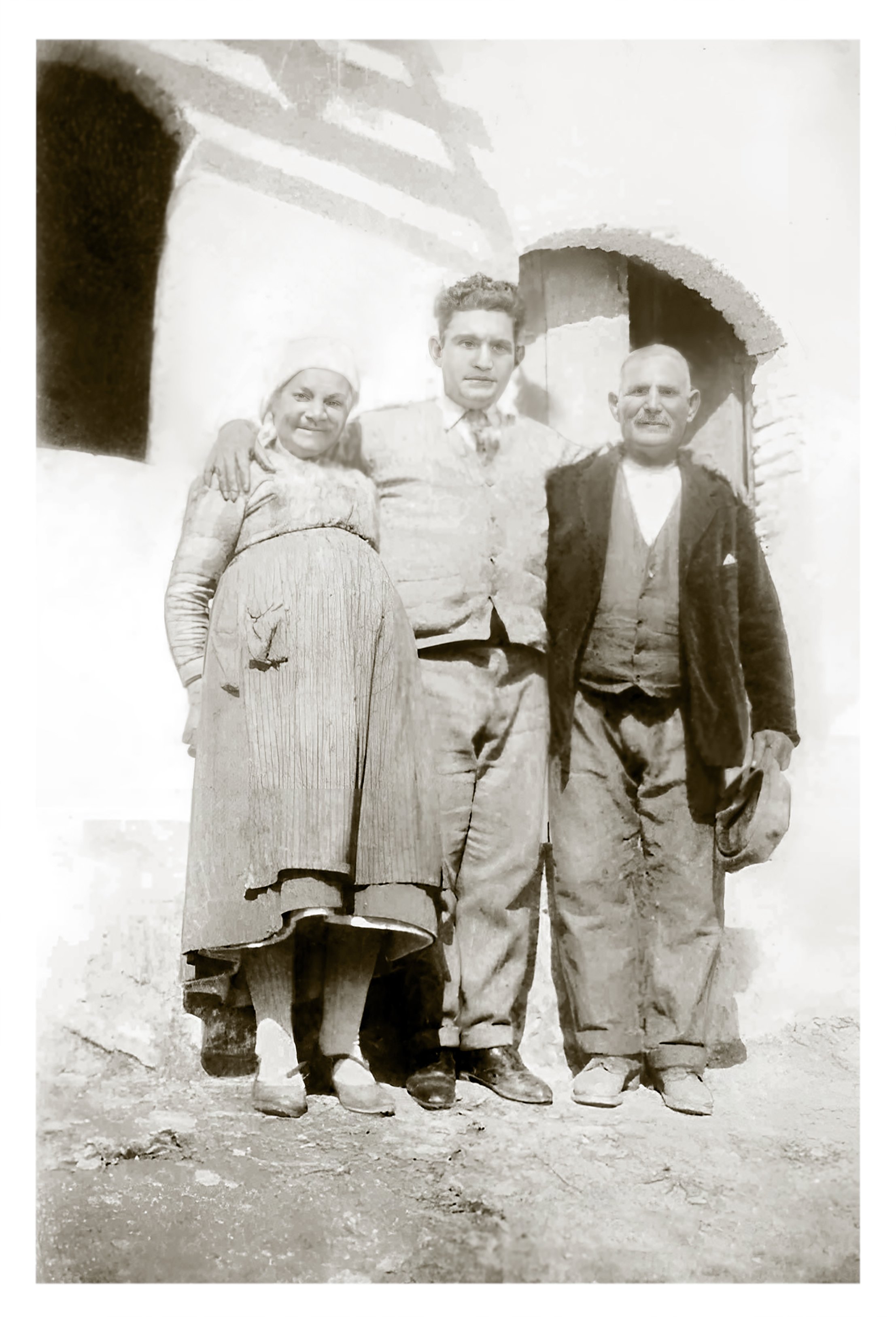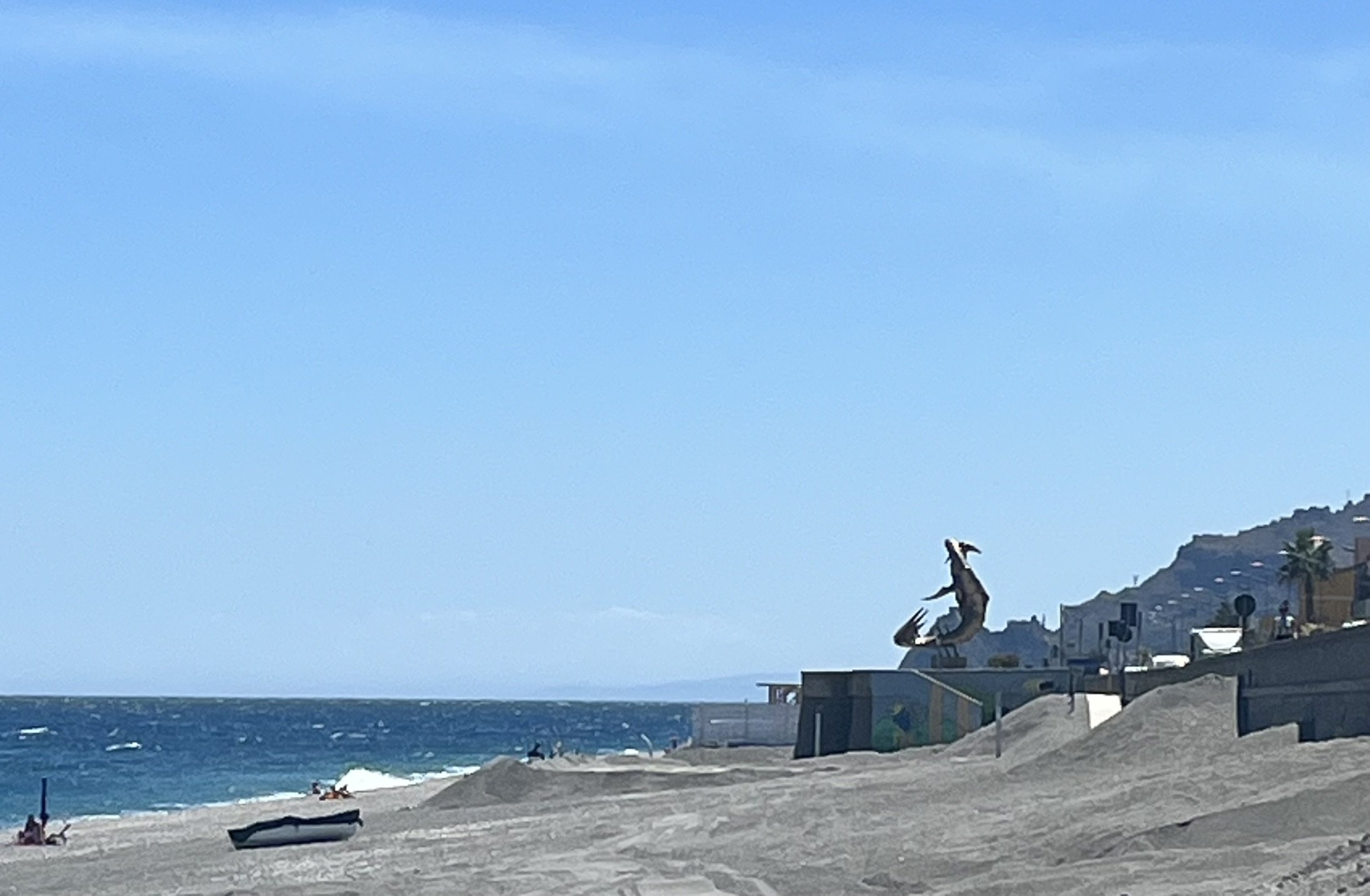Savoca & Santa Teresa di Riva
the history of the city, and the Cannata Family
After we left Bellona, we spent a few days in Naples and Pompeii and then took the high-speed train down to Messina, Sicily. We had planned to simply pick up our rental car here and head on down to where we were staying, but instead we had an unexpected and delightful surprise. As we drove through the city, we passed a spot called Cannata Sicilian Bakery (the surname of our Sicilian family). We were pretty hungry and stopped in and had some of the best food of our entire trip. Everything was incredible, especially the arancini. My sister and I did our best to talk with the owners, a woman and her mother, and explain we were excited to see the store because of our family. They asked where our family was from and it sounds like both our families moved out of the Savoca area at the same time, ours to Cleveland and theirs to Messina. It was a really fun, delicious stop and great moment of connection.
From there we were on to the fourth and final genealogical stop on our tour through southern Italy. In northeast Sicily, on the shores of the Ionian Sea, lies Santa Teresa di Riva, a seaside town of about 3 square miles at 20 feet above sea level. Less than three miles inland is the mountainous town of Savoca which is also 3 square miles but rests high up at nearly 1,000 ft above sea level. Savoca and Santa Teresa di Riva are sister cities that once were united as a small fishing village where people moved in and out with the seasons from the coast to the mountains.
Savoca looking out towards the Ionian Sea
This was the home of my maternal great-grandfather, Santo, and the Cannata family.
History of the Town
The area where Savoca and Santa Teresa are was once part of a nearby Phoenician city named Phoenix that was a large trading post by at least 36 BCE, but was eventually abandoned due to pirate raids. By the 9th c. the area was a small agricultural village known for silkworm breeding, citrus fruits, and growing cotton and other produce. The origins the city as it exists today are Medieval and rest in Pentefur Castle, an Arab architectural structure from the 11th century which legend says was built by 5 thieves who escaped prison in Taormina and moved into the mountains to protect themselves, eventually building the castle and populating the area. It is around the 11th century that the town also gets it’s name, Savoca, meaning Elderberry.
Savoca, the road up to the church
Once pirate raids reduced, for centuries the people would move back and forth from the city to the town, going to the water for fishing during the summer and moving back in over the winters until the population on the coast grew and they wanted to separate from Savoca. In 1853 Santa Teresa di Riva ceased being the Marina di Savoca and became its own city, named after the wife of Ferinand II.
The Cult of the Dead
The area has changed hands many times and was ruled by the Phoenicians, Greeks, Romans, Vandals, Ostrogoths, Byzantines, Arabs, Normans, Swabians, French, Argonese, Spanish, Bourbons, British, and finally under Italy starting in 1860. Because of this, the city and peoples have been influenced by the architecture and culture of these different groups through time. One example of this is the Cult of the Dead, a popular belief system believed to originate in Phoenician traditions and carried on through Catholic religious practices. Until recently they practiced preservation of bodies through mummification and burying their dead with expensive objects. The city’s mummies are still available to view at Cripta del Convento dei Frati Cappuccini, a crypt in the city, and it was common to take meals there on Sundays to eat with family who had passed.
Convento dei Frati Cappuccini in Savoca
Another tradition related to the Cult of the Dead is La Festa dei Morti, the Feast of the Dead (celebrated from November 1-2). Festa dei Morti is an important day used to remember and celebrate the return of dead relatives. The holiday is celebrated by sharing memories of loved ones, visiting cemeteries, and decorating graves with flowers and candles.
From the convent's sign, unfortunately it was closed the day we went
The Godfather
Savoca has become well known in the past decades after it became the filming location for portions of the Godfather series when the town provides the backdrop for Michael fleeing to Sicily. The town was chosen because of its beautiful setting and similarities to Corleone, the actual location in the books. Production started in Corleone, but due to monetary expectations by the mafia there, they moved filming across the island.
Bar Vitelli in Savoca
The city is known as the town with seven faces because every where you turn has another picturesque view. Some of the beautiful settings used in the movie are Bar Vitelli, where Michael asks permission to marry Apollonia and the Church of San Nicolo where they were married.
The Church of San Nicolo, Savoca
The City Today
Today the city of Savoca has around 1,700 people, and their economy is primarily agriculture and cattle. The area is known for cultivating citrus, olive, grapes, and lemons as well as tourism from people interested in the Godfather. Santa Teresa di Riva has grown much larger with a population of over 9,000, they are a beach town and have a lot of tourism there in addition to restaurants and stores. One of the biggest events in the area each year is the Feast of Saint Lucia (a patron saint of Savoca) celebrated twice, first on December 13th in a solemn religious festival, and then again in mid-August for a city-wide feast.
Santa Teresa di Riva
Family History
My maternal great-grandfather, Santo, was born here in Savoca in 1902 to Antonina Scarcella and Antonio Cannata, a bracciale or laborer in the area. The family struggled economically and Santo’s older brother, Vincenzo, left first for the states. Santo came later to the U.S. on the Pesaro, coming through Napoli at the age of 17. He arrived in Ellis Island on 8/28/1920 and was coming to be with his brother Vincenzo Cannata who was working as a coal miner in Yukon, Pennsylvania for the Lackawana Steel Company.
Family in Savoca working in the fields, taken by Santo
A year before Santo arrived, Vincenzo had married Cora, the daughter of Nunzia and Giuseppe Santarelli and was living with the family in the coal town when Santo arrived. Santo moved in with the Santarelli family and worked with his brother and Giuseppe in the mines. After a number of years, Vincenzo and Cora decided to leave the mines and move to Cleveland, Ohio for better opportunities. Their younger siblings, Santo and Jennie, came along with them and two years after that Santo and Jennie were married on October 22, 1932.
Santo, visiting his parents in Savoca after living in the U.S.
Additional Photos
On the beaches of Santa Teresa di Riva, pointing to a good friend's homeland outside Reggio Calabria.
The beach in Santa Teresa di Riva
Godfather moment at Bar Vitelli
Coppola statue overlooking Savoca
Breakfast Club moment heading down from the Convent
















